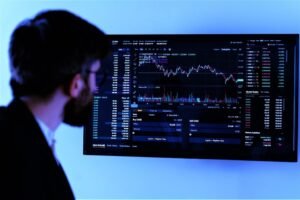How the Conference Board’s Leading Economic Index (LEI) accurately predicts recessions and recoveries in the U.S. economy.
By
Jim Hingst
For more
than 60 years the Conference Board’s Leading Economic Index (LEI) has
accurately predicted recessions in the U.S. Does
that mean that the index is bulletproof? Certainly not! But when someone is
batting 1000, it’s hard to bet against them. In fact, economists are betting
that there is a 70% chance that the U.S. will be in a recession within the next
12 months. Even if events do not occur within the predicted timeframe, it’s not
if we will have a recession, but when as explained in the article
“Surviving the Next Recession.”
What is The Conference Board?
The Conference
Board is an independent, non-profit think tank which has been forecasting the ups
and downs of the U.S. economy since 1916. The
composite LEI helps economists, businesspeople and investors forecast
future developments in the economy anywhere from 7 to 20 months in advance.
What
accounts for the accuracy of the LEI is that it encompasses 10 key inputs both
financial and nonfinancial. These economic indicators are a compilation
of statistics from surveys of private businesses and government agencies. The remarkable prescience of the LEI is especially
significant now because it has been on a downward trend for the last 13 months
as explained in “Weathering the Gathering Economic Storm.”
The
leading economic indicators in the LEI include:
Financial
Inputs:
●
Leading Credit Index. This index monitors the lending environment
in the U.S. Favorable lending conditions indicate growth in the economy. When money
is tight, the economy is in decline.
● S&P 500 Index of Stock Prices. The stock index appraises the value of
the business sector and the financial health of stockholders. Average stock prices are generally a
reliable leading indicator foreshadowing economic events in the near future. The question that many have is if the financial
market is robust, how can the country be heading for a recession? A possible
explanation is that overinflated prices for tech stocks are propping up the stock
index.
●
Interest Rate Spread. The “spread” measures the variance between
short-term treasury rates and those for 10-year bonds. Read “Inversion of theYield Curve”.
Non-Financial
Inputs:
● ISM®
(Institute for Supply Management) Index of New Orders. Based
on a survey of purchasing and supply managers, this index factors in new orders;
backorders; new export orders; imports; and inventories. An increase in purchasing
activity indicates an expanding rather than contracting economy.
●
Average Consumer Expectations for Business Conditions. Consumer
expectations reflect how the public views the outlook for the business environment,
job security and prospects for income growth for the next 6 to 12 months. This leading
economic indicator expresses how consumers believe the economy will affect their
lives.
●
New Home Building Permits. Higher material costs and climbing mortgage
rates, which are now over 7%, have contributed to a decrease in building permits.
This suggests a slowdown in the construction field. The ensuing ripple effect impacts
sales of building materials and has a major effect on the overall economy.
● Average Weekly Manufacturing Hours. An increase in the weekly average of
working hours for manufacturing suggests an increase in demand which will fuel
production – a good sign for a growing economy. By contrast, manufacturing output declines in
response to a drop in orders from retailers. It indicates that retailers are
lowering inventories in anticipation for lower sales. Changes in manufacturing
hours respond very quickly in response to changes in the health of the economy,
which make it a key indicator to watch.
●
New Manufacturers’ Orders for Non-Defense Capital Goods (excluding aircraft). Investments
in capital goods, which includes buildings, equipment and machines, suggests
that businesses plan to expand production capacity.
●
New Manufacturers’ Orders for Consumer Goods & Materials. While
orders for capital goods provide investors with a long-term view of the country’s
economic future, new orders for consumer durable goods, such as appliances, furniture
and vehicles, typically provide insight into short-term spending. Spending for
either consumer durable goods or business durable goods indicates an upswing in
the economy.
●
Average Weekly Unemployment Claims. An increase in applications
for unemployment foretells higher unemployment, lower consumer spending and a
decrease in business activity. As a leading economic indicator, applications
for unemployment do not show up in the unemployment rate for several weeks. By
comparison, the unemployment rate is considered as a lagging indicator.
Conclusion.
Whether you are a financial analyst for a
major corporation or the owner of a small shop, keeping a watchful eye on the Leading
Economic Index is critical in guiding your business decisions. Expect that inflation will continue unabated
until 2025. As the Fed attempts to control inflation with additional rate hikes,
interest rates will rise which will dampen consumer spending. When the LEI is
on a downward trend, as it is now, you should prepare for a recession, which
typically last for an average of 10 months. Key to survival is refocusing your
sales efforts so revenues offset your shop and administrative expenses. Sales
suggestions are covered in my article: “Sales Survival in an Anemic Economy.”
Read these other articles by Jim Hingst:
Harvesting More Leads from Social Media
Measuring the Success of Business Plans
Developing a Sales and Marketing Plan
Crafting Your Digital Marketing Message
© 2023 Jim Hingst, All Rights Reserved





